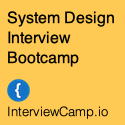
Scientists are doing it for themselves. Doing what? Databases. The idea is that most databases are designed to meet the needs of businesses, not science, so scientists are banding together at scidb.org to create their own Domain Specific Database, for science. The goal is to be able to handle datasets in the 100PB range and larger.
SciDB, Inc. is building an open source database technology product designed specifically to satisfy the demands of data-intensive scientific problems. With the advice of the world's leading scientists across a variety of disciplines including astronomy, biology, physics, oceanography, atmospheric sciences, and climatology, our computer scientists are currently designing and prototyping this technology
The scientists that are participating in our open source project believe that the SciDB database — when completed — will dramatically impact their ability to conduct their experiments faster and more efficiently and further improve the quality of life on our planet by enabling them to run experiments that were previously impossible due to the limitations of existing database systems and infrastructure. Many of the world's leading computer scientists with expertise in database systems have contributed to the design and architecture of the system to meet the needs of the world's scientists.
SciDB looks like a cool project and follows what might be considered a trend, instead of beating a general tool into submission, build a specialized tool that does what you need it to do. More details about SciDB can be found in the paper A Demonstration of SciDB: A Science-Oriented DBMS. A nice succinct poster is available summarizing the product.
Some interesting bits from the paper:
Click to read more ...
 Friday, April 30, 2010 at 7:56AM
Friday, April 30, 2010 at 7:56AM 















 Imagine a single search request coursing through Google's massive infrastructure. A single request can run across thousands of machines and involve hundreds of different subsystems. And oh by the way, you are processing more requests per second than any other system in the world. How do you debug such a system? How do you figure out where the problems are? How do you determine if programmers are coding correctly? How do you keep sensitive data secret and safe? How do ensure products don't use more resources than they are assigned? How do you store all the data? How do you make use of it?
Imagine a single search request coursing through Google's massive infrastructure. A single request can run across thousands of machines and involve hundreds of different subsystems. And oh by the way, you are processing more requests per second than any other system in the world. How do you debug such a system? How do you figure out where the problems are? How do you determine if programmers are coding correctly? How do you keep sensitive data secret and safe? How do ensure products don't use more resources than they are assigned? How do you store all the data? How do you make use of it?